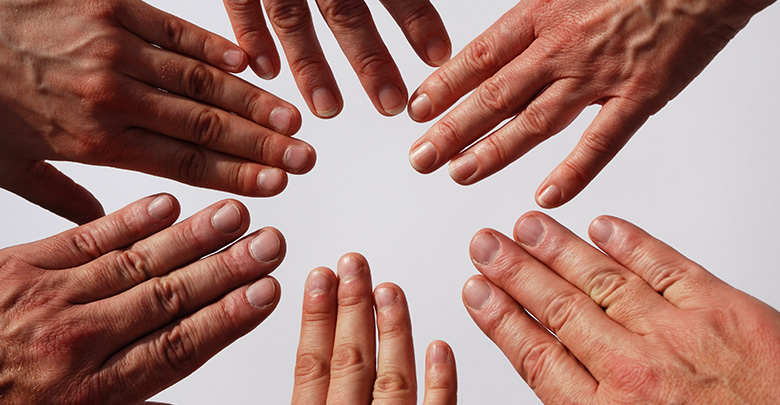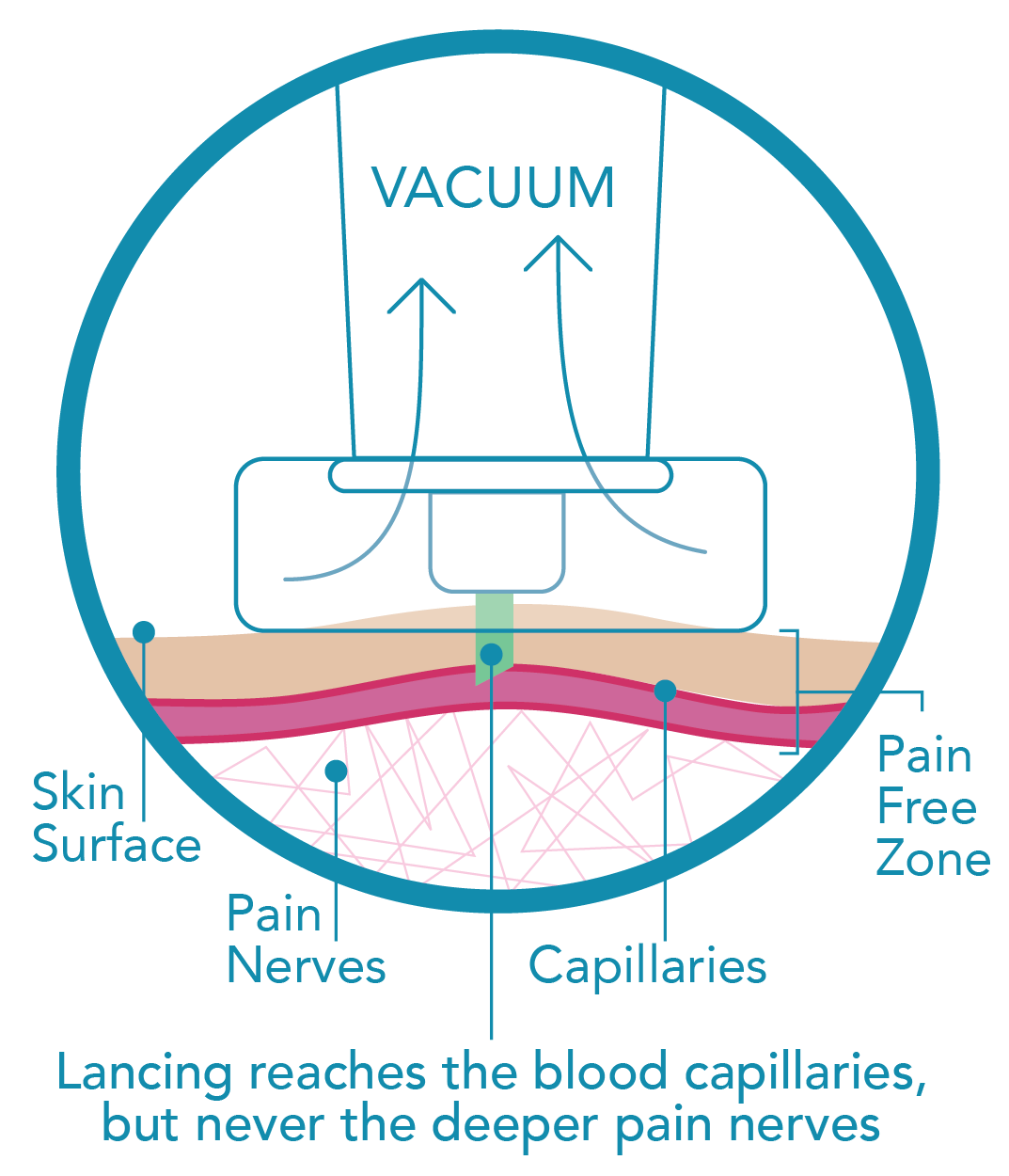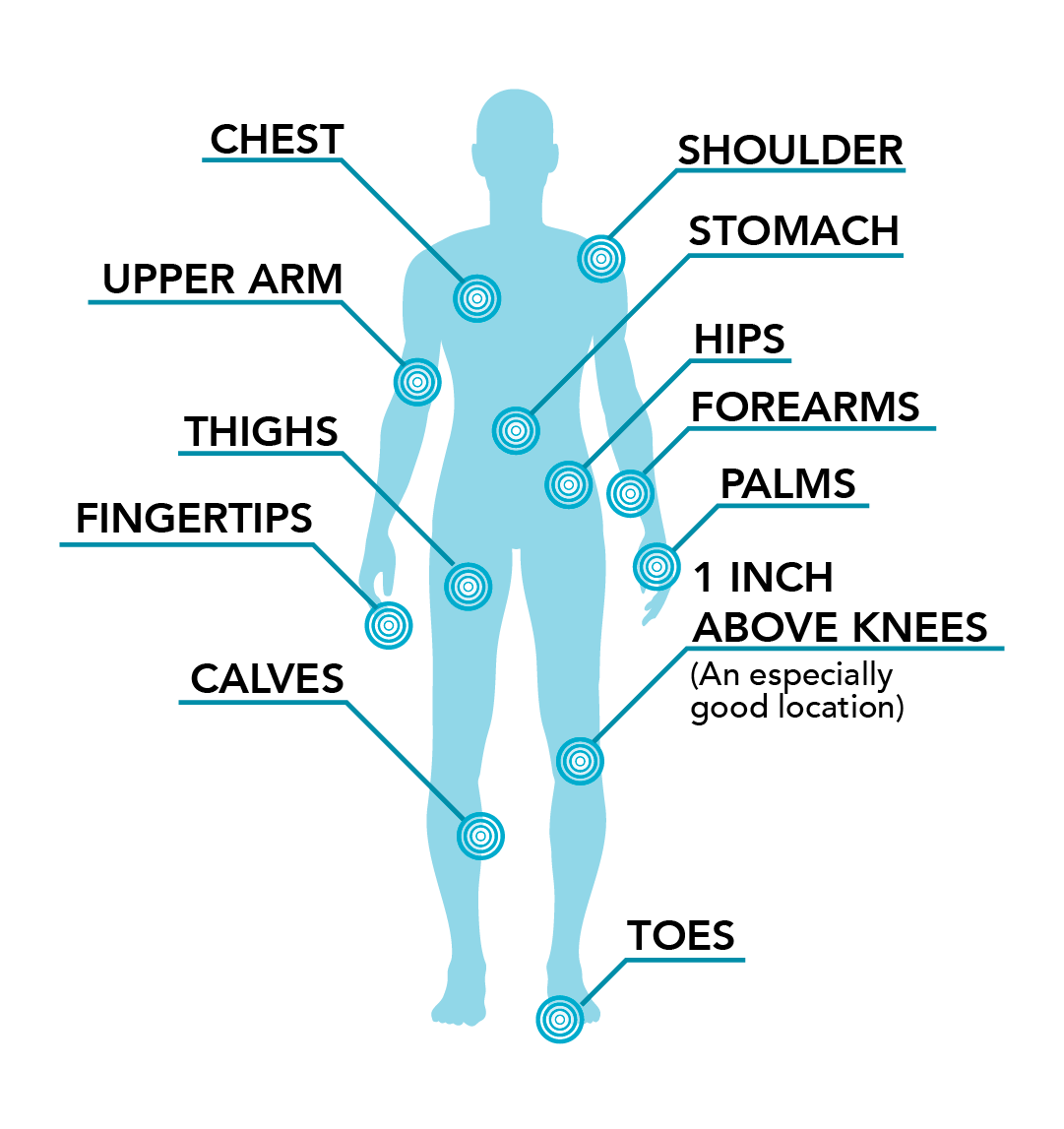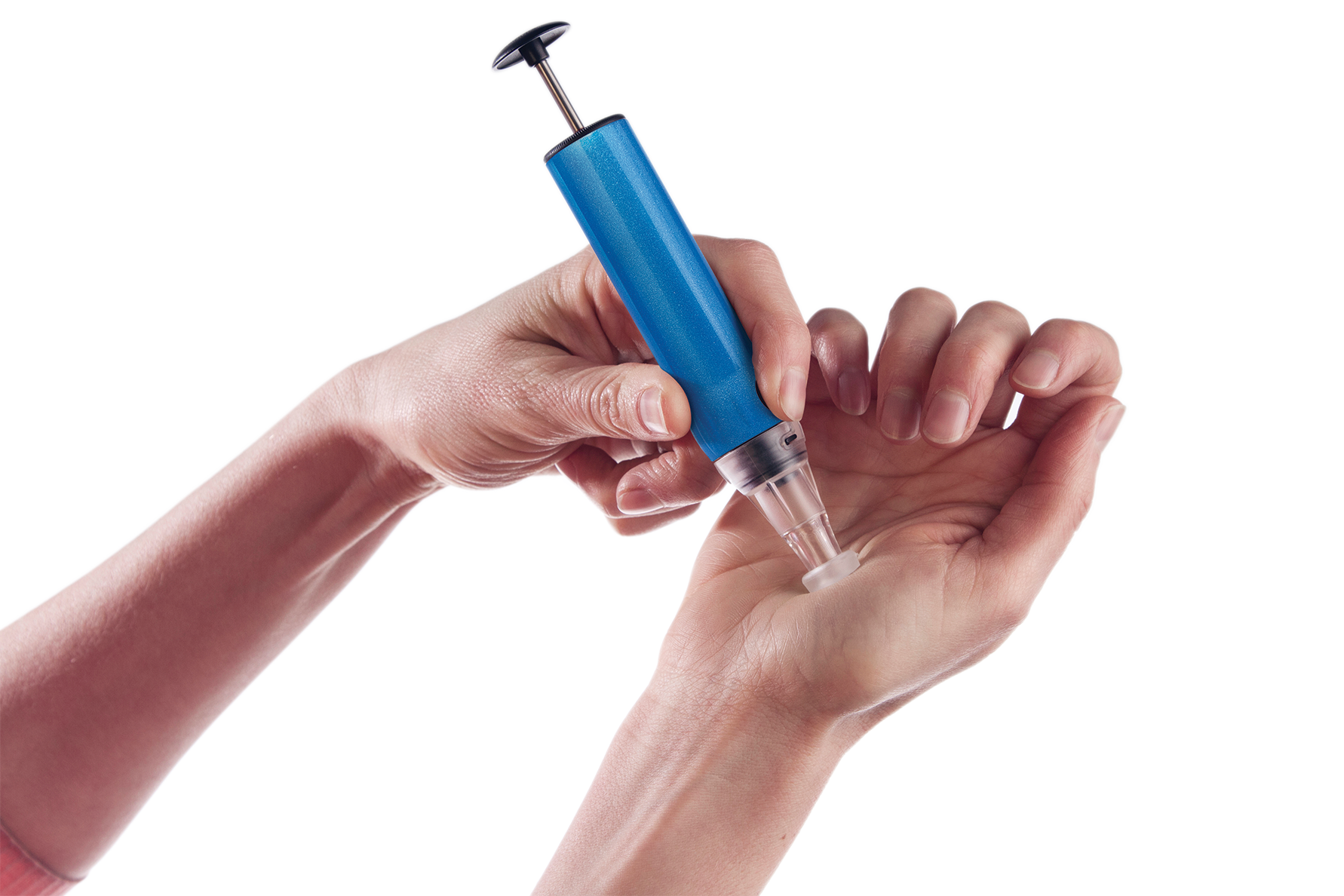Save Your Fingertips with Alternate Blood Draw Sites & Better Lancer
If oversensitive or scarred fingertips make you dread testing your blood sugar, here are alternative testing sites and a new lancer that will help

Testing your blood sugar multiple times a day is already a pain, even before you consider the literal pain of stabbing a needle into your fingertips over and over. After all, the fingertips are one of the most sensitive areas of the body. They are packed with nerve endings meant to help us detect changes in textures and temperatures. Not for sticking tiny needles into.
If stabbing a lancet into this ultra-sensitive flesh makes you shudder, or worse yet, causes you to skip your BG testing altogether, then it is time to consider using an alternate blood draw area.
Why Doctors Traditionally Recommend Testing Your Fingers?
If you’ve never been told that you can use other areas on your body to test your blood sugar, don’t worry, you’re not alone. Most diabetics and even most doctors aren’t aware that you can get an accurate BG measurement from anywhere else but your fingers.
This has a lot to do with why the fingertips were chosen for use in the first place.
When carbohydrates are eaten at a meal, they are digested in the stomach and absorbed into your bloodstream as glucose. This blood travels through your veins to various organs and areas of the body. This glucose moves out of the bloodstream and into the interstitial areas around cells where it can then be taken up by the cells and used.
To get a measurement of your current blood sugar levels, you want to test the blood in the veins or capillaries, as the amount of glucose in the interstitial fluid always lags what is in the veins.
Your fingertips are full of capillaries that can easily be tested with an at-home blood draw. Your fingers also have the benefit of being easy to squeeze, which makes it possible to get just the right amount of blood out without having to use a larger needle.
Studies that have looked into using alternative blood draw spots for BG testing have mostly found that areas like the leg, forearm, and stomach do not produce the same readings as the fingertips. This is because these areas have a lot more interstitial space than they do capillary beds. So, if your blood sugar is currently rising and you test a blood droplet from your leg, the amount of glucose in it is likely to be less than your actual BG level. Similarly, if your BG is dropping, your leg measurement is likely to be higher than your actual levels.
But that doesn’t mean these areas can’t be used for testing under certain circumstances. And beyond this, some recent studies have shown that there are alternate, less-sensitive areas of the body that do produce accurate BG readings.
 Alternative Testing Sites
Alternative Testing Sites
If you dread pricking your fingertips, you don’t have to look far to find an alternative draw site that is just as accurate for BG testing.
The fleshy areas of your palm are full of the same kinds of capillary beds as your fingertips, but with far fewer nerve endings. And scientific studies, like this one published in Diabetes Technology & Therapeutics, show that the BG readings taken from these areas are in the clinically acceptable range when compared to simultaneous fingertip readings.
Use the fleshy ridge that runs between your pinky and wrist and or the fleshy pad at the base of your thumb, to avoid the pain of fingertip testing without compromising your diabetes management.
If you are interested in looking beyond your hand for even less painful testing sites, keep in mind, you can still use your forearms, legs, and stomach. But, because these areas are less accurate and tend to give lagging readings, you only want to do so if your blood sugar is relatively stable.
The best times to use these areas would be before a meal and more than two hours after eating when your sugars are likely to have stabilized. Don’t rely on these areas if your blood sugar is likely to be changing rapidly such as right after eating, in the morning when your sugars might be rising naturally, or anytime that you feel low.
 Vacuum Lancer Device Decreases Pain Wherever You Test
Vacuum Lancer Device Decreases Pain Wherever You Test
Beyond BG accuracy, one of the main reasons the fingertips are used so frequently for blood sugar testing is how easy it is to get the right-sized blood sample from them.
Achieving a large enough blood sample from areas like the arms and legs can be more challenging. Even the palm can be difficult to squeeze blood from. Traditionally, the only way to overcome this would be to use a larger lancet to encourage a larger sample. But this can easily negate the main point of alternative site testing, which is to reduce pain.
 But a new product is making alternative site testing easier for diabetics. The Genteel lancet uses vacuum pressure to pull blood from the small hole made by the extra-fine lancing device. This simple trick makes it easier to test on flat surfaces like your arms and legs. And the ultra-fine needle combined with the vacuum pressure means a lot less pain, even when used on the fingertips.
But a new product is making alternative site testing easier for diabetics. The Genteel lancet uses vacuum pressure to pull blood from the small hole made by the extra-fine lancing device. This simple trick makes it easier to test on flat surfaces like your arms and legs. And the ultra-fine needle combined with the vacuum pressure means a lot less pain, even when used on the fingertips.
This lancer does require its own, specially designed lancets and is larger and more bulky to carry around than traditional lancers.
If you have ever skipped a BG test because you couldn’t stand the thought of pricking your finger one more time, then it is worth considering adding a Genteel vacuum lancer to your diabetes toolbelt.
We all know how important frequent sugar testing is to maintain healthy blood sugars. By utilizing palm testing in place of finger pokes and taking advantage of additional alternative testing sites when your sugars are stable, you can easily avoid stabbing those sensitive fingertips. And with the Genteel lancer, you can do it with minimal pain and maximum ease.







